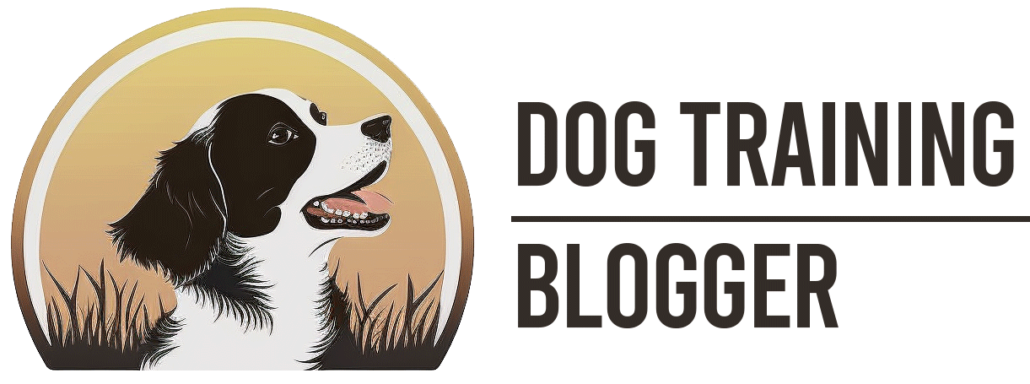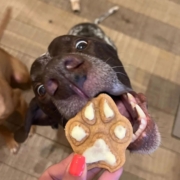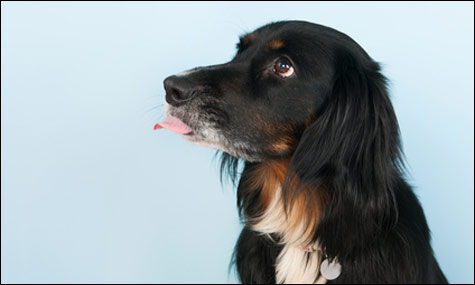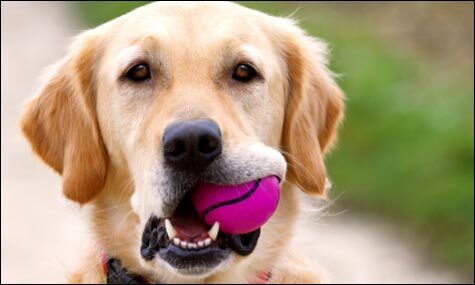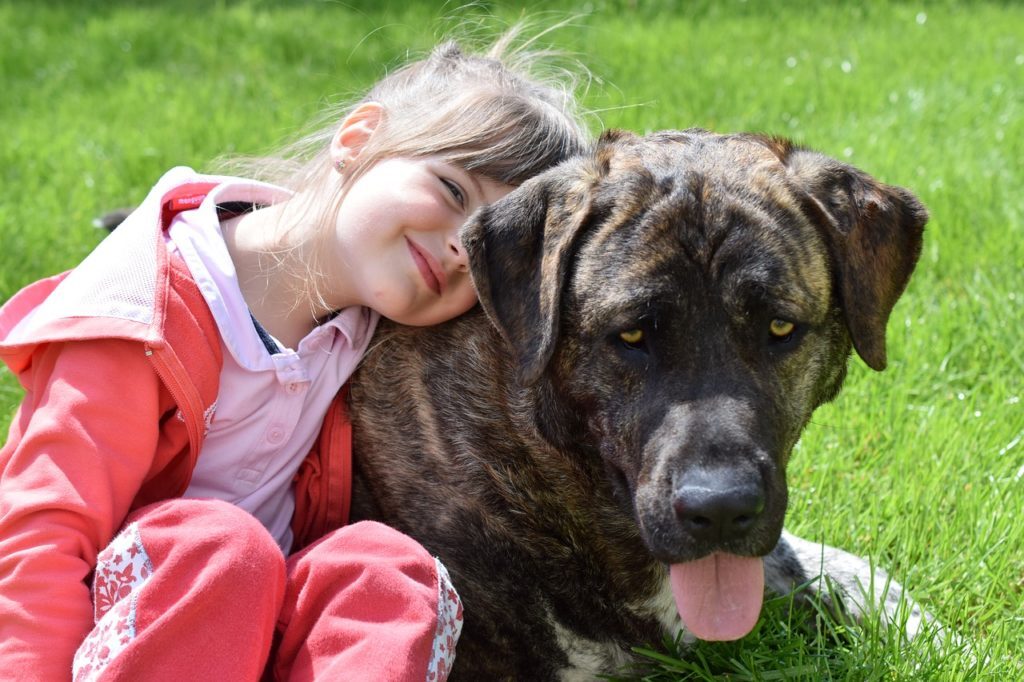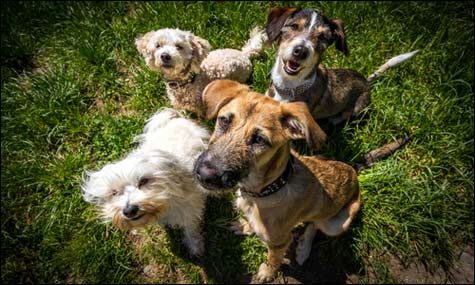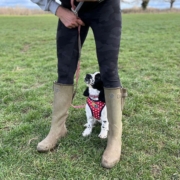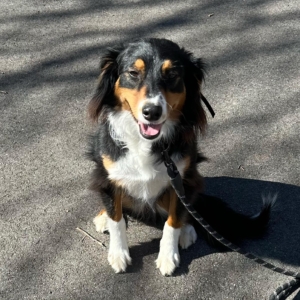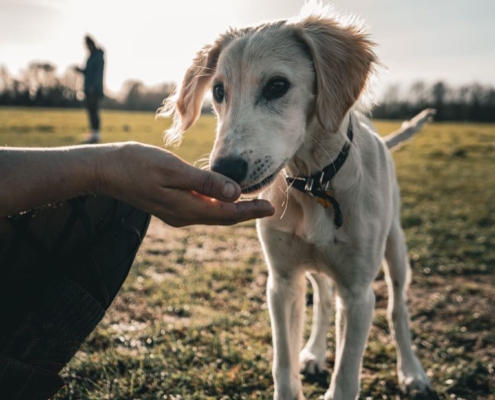Training Techniques for Teaching Your Dog the “Leave It” Command
The ‘Leave It’ command is an essential skill for any well-trained dog. It’s invaluable when it comes to preventing your four-legged companion from picking up dangerous objects, avoiding food allergies, or stopping them from engaging in unwanted behaviors.
In this blog post, we’ll dive into the importance of the ‘Leave It’ command, provide you with a step-by-step guide to teach your dog this crucial skill, and share some expert tips to help you and your furry friend succeed in mastering it. Even if you’re an eighth-grader, we’ll make it easy for you to understand and train your pet dog effectively.
| Key Takeaways |
|---|
| The ‘Leave It’ command is essential for teaching your dog self-control and keeping them safe in various situations. |
| Start by training your dog in a controlled environment, using treats as a lure and reward for successfully leaving the object alone. |
| Gradually increase the difficulty and introduce distractions to strengthen your dog’s understanding of the command. |
| Consistency, patience, and regular practice are crucial for successfully teaching your dog the ‘Leave It’ command. |
| Avoid common mistakes, such as inconsistent cues or moving too fast, to ensure effective training. |
Preparing for Training
Before you start teaching your dog the ‘Leave It’ command, it’s essential to gather a few necessary materials. You’ll need some tasty treats that your dog loves, a leash, and a quiet, distraction-free environment to begin training.
The treats should be small and easy to swallow, so your dog doesn’t get too distracted by the food. The leash is essential for controlling your dog’s movements during the initial stages of training, while the quiet environment will help your dog focus on learning the command.
Also see this article on how to master the art of dog training that we wrote recently. This is an important way to learn the important components of properly training your dog.
Step-by-Step Guide to Teaching the ‘Leave It’ Command
To successfully teach your dog the leave it command, follow these 5 steps.
Step 1. Introducing the command and rewarding non-interaction
Start by placing a low-value treat in your hand and presenting it to your dog. As your dog approaches the treat, say “Leave it” in a firm voice and close your hand, hiding the treat. When your dog stops sniffing or pawing at your hand, praise them and give them a high-value treat from your other hand. This teaches your dog that they get rewarded for leaving the treat alone.
Step 2. Increasing the difficulty with tempting objects
As your dog starts to understand the command, you can increase the difficulty by using more tempting objects, such as a favorite toy or a higher-value treat.
Continue practicing the command, rewarding your dog when they choose to leave the object alone (in reality, this may take quite a few attempts!)
Step 3. Adding distance and distractions
Gradually increase the distance between your dog and the object they need to leave, adding distractions such as other dogs, people, or noises. This will help your dog generalize the command and understand that “Leave it” applies to various situations.
Step 4. Practicing with real-life scenarios
Once your dog has mastered the ‘Leave It’ command in a controlled environment, it’s time to practice in real-life situations. Use the command when encountering tempting objects or distractions during walks, at the dog park, or at home.
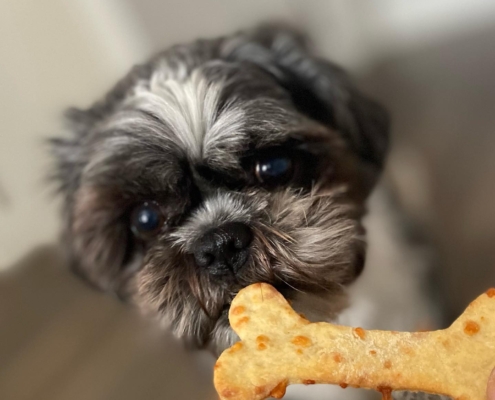
As dog owners, it is our full responsibility to train and teach our pets to behave properly. For more helpful tips, check out this website.
Tips for Successful ‘Leave It’ Training
To ensure successful ‘Leave It’ training, keep these expert tips in mind. There is just 3 and they are key to your success.
Use high-value rewards
Your dog will be more motivated to comply with the command if they know they’ll receive a tasty treat or their favorite toy in return.
Be consistent with the command
Always use the same command and tone of voice, so your dog knows exactly what you expect from them.
Practice regularly and in different environments
The more you practice, the better your dog will respond to the command, regardless of the situation.
Common Mistakes and How to Avoid Them
When training your dog to ‘Leave It,’ some common mistakes can hinder progress. Here’s how to avoid them:
- Repeating the command too often.
If you say “Leave it” repeatedly, your dog may become confused or desensitized to the command. Say it once and wait for their response. - Not rewarding appropriately.
Ensure you provide an appropriate reward for leaving the object, such as a high-value treat or praise. - Giving in to your dog’s demands.
Stay consistent and don’t allow your dog to access the object they’re supposed to leave, even if they whine or show signs of frustration. Giving in will only encourage unwanted behaviors. - Moving too fast.
Don’t increase the difficulty or add distractions too quickly. Allow your dog to build a solid foundation with the command before moving on to more challenging scenarios.
And Finally…
Training your dog to understand and obey the ‘Leave It’ command is an essential part of responsible pet ownership. By following our step-by-step guide and expert tips, you’ll be well on your way to having a well-behaved canine companion who can resist temptations and stay safe in various situations.
Remember, consistency, patience, and regular practice are the keys to success. So, keep working with your dog, and you’ll both reap the benefits of effective training. And remember, even if you’re an eighth-grader, you can use the tips and techniques in this blog post to help you train your pet dog effectively.
You can also check the article on how to teach your dog the ‘off’ command, this can help to improve your dog’s behavior.
